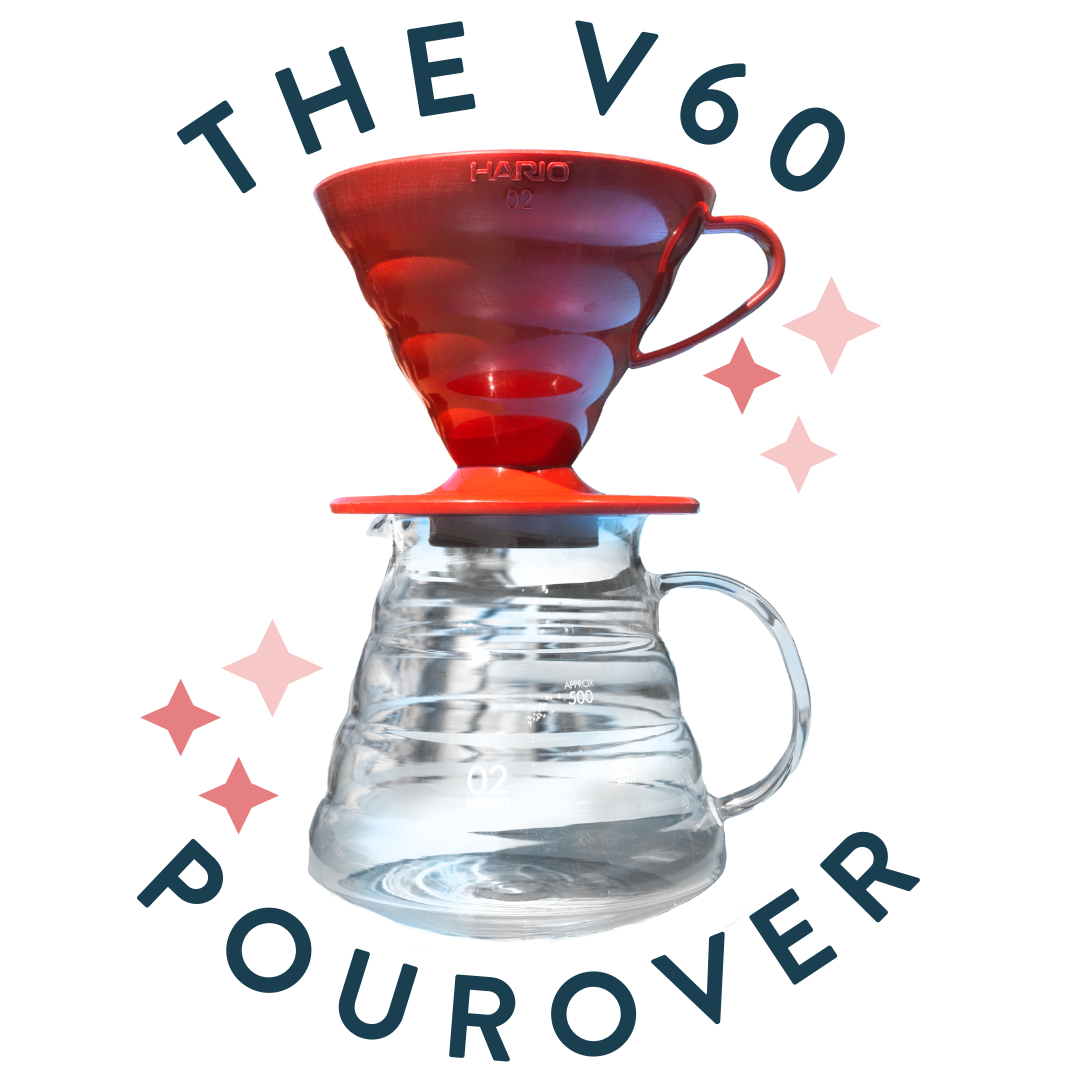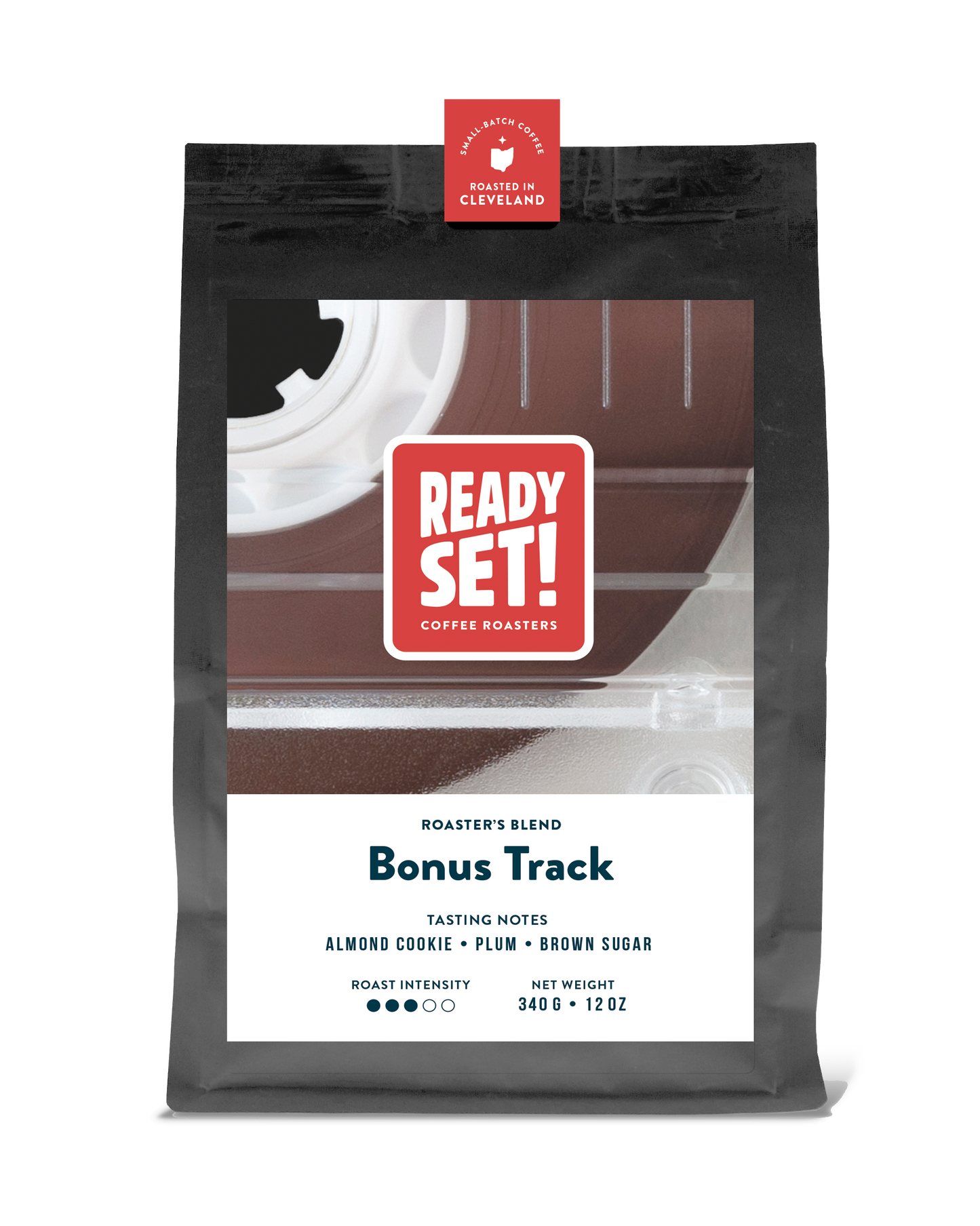A blend so good you can't believe you didn't know about until just now!

Pour-over coffee offers excellent flavor and is similar enough to drip coffee while being just different enough to make you feel like a coffee wiz. Pour-overs are great for trying out new roasts—we use them all the time for sampling new blends or single origins. They also add a touch of sophistication when entertaining guests for brunch, if that's your thing.
Pour-over is a manual brewing method where hot water is poured over ground coffee, dripping through a filter into a cup. This technique offers precise control over brewing, yielding a clean, balanced cup with vibrant flavor. Unlike automated drip coffee, the pour-over’s manual control over water flow, timing, and pour pattern allows for superior flavor extraction and a more nuanced cup. It's like driving stick!
For this guide, we’ll focus on the Hario V60, a beginner-friendly and affordable option for exploring pour-over coffee. Other pour-over brewers include the Chemex and Kalita Wave—each with their own grind settings and nuances, which we’ll cover in future brew guides. For now, we’ll assume you're using a V60. A basic dripper typically costs around $10–12.
The Coffee-to-Water Ratio
Coffee: Freshly ground beans (medium-fine, like sea salt)
Water: Clean, quality water heated to ~204°F (just off boil)
Brewer: Hario V60
Filter: Unbleached or bleached V60 filter
Kettle: Gooseneck preferred for precision (electric or stovetop)
Scale: A kitchen scale
The Coffee-to-Water Ratio
The golden rule is 1:16—one gram of coffee for every 16 grams of water. From its shining light, you shall never be lost, whether you're brewing 1 gram or 10,000. This ratio is why a scale is so important: it helps ensure consistency and optimal extraction. Too much water can dilute the flavor; too little can over-extract and make the cup bitter. In short: 1:16, people!
A gooseneck kettle helps control pouring speed and volume. While not strictly necessary, it enhances the pour-over experience. A regular kettle works fine, but if you're a die-hard pour-over convert, consider picking one up.
Water Temperature & Quality
Water should be around 204°F (just below boiling). Temperature impacts extraction: hotter water with a coarser grind can cause weak or astringent coffee; cooler water with a finer grind can under-extract the flavor. That’s why dialing in water temp is key.
Also, water quality matters. If you’re using tap water straight from the sink, you're already at a disadvantage. Filtered or distilled water will dramatically improve your cup.
Coffee Beans
Pour-overs are incredibly versatile—they shine with nearly any bean, from Cerrado to GERA, Kawa Yacu, or Amplifier. The only adjustment you might need to make is water temperature. Dark roasts generally perform better at slightly lower temps, while light roasts may need hotter water to fully extract their flavors.
Brewing Instructions
Pre-wet your filter. Place the filter in the V60, rinse it with hot water, and discard the rinse water.
Grind your coffee. Aim for a texture like fine sea salt. Too fine = slow extraction; too coarse = weak and fast.
Prep the scale. Tare the scale with the cup/pot, V60, wetted filter, and grounds in place.
Time to bloom. Pour twice the amount of water as coffee (e.g., 30g water for 15g coffee). Lightly swirl or stir. Start your timer—let it bloom for 30 seconds. This releases CO₂ and primes the grounds for better extraction.
The main pour. Slowly pour the remaining hot water in small circles, mostly in the center but occasionally near the edges to ensure even saturation. For the first round, pour about 60% of the remaining water. Continue swirling gently as needed.
Total brew time. Aim to finish pouring by 3:00 minutes and allow the coffee to finish dripping. Ideal total time is around 3:30. If it’s still dripping after that, carefully lift the filter and let it finish draining into the cup. Never let the grounds go completely dry during brewing.
From here, your coffee should be good to go! Compost the filter and grounds if you can, and be sure to clean your V60 thoroughly—residue can impact the flavor of future brews.
Happy Brewing!

